
Travel Guide
Introduction
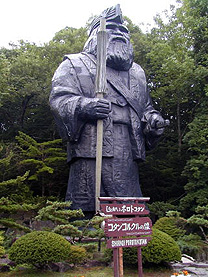 |
| Statue of an Ainu Chief Kotankorkur |
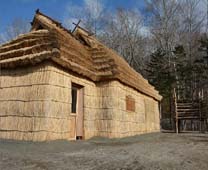 |
| Ainu traditional house "Chise" |
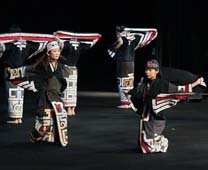 |
| Ainu traditional dance performance |
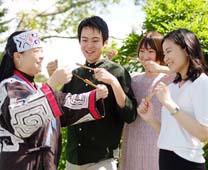 |
| Ainu’s traditional instrument experience |
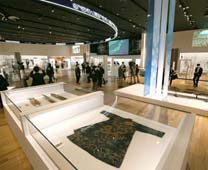 |
| National Ainu Museum |
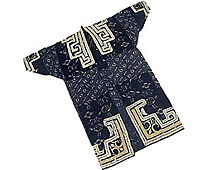 |
| Ainu traditional close |
National National Ainu Museum and Park, or Upopoy, is one of the country's most important museum about the Ainu, the indigenous people of northern Japan. This 8,600 square-metre park is the best place to learn about Ainu life with hands-on activities, traditional performances, local cuisine and museum exhibitions. Upopoy means ‘singing in a large group’ in Ainu, and the museum hopes to connect visitors to Ainu history and culture, which was unfortunately overlooked for most of Japanese history.
National National Ainu Museum and Park is divided into three main parts: the National Ainu Museum, National Ainu Park and a memorial, the latter used by Ainu for ceremonies.
The two-floor National Ainu Museum has a permanent collection on Ainu life, which covers the language, day-to-day living and work of the community, along with a special exhibition room. There is also a theatre playing short films about Ainu culture and history.
The National Ainu Park is an open-air museum where visitors can experience various elements of Ainu culture—a culture that has been cultivated amidst nature. The park holds a free performance with traditional Ainu folk dances such as the iomante rimse (sending of the bear's spirit), the sarorun chikapu rimse (courting crane dance), etc., songs and the musical instruments demonstrations like wooden mouth harp mukkuri, and these are performed by Ainu in traditional costume as they were in ancient times. Iomante rimse and sarorun chikapu rims are designated as significant intangible folklore cultural assets of the nation. Visitors can also learn about Ainu culture at the open-air National Ainu Park through activities such as wood carving.
Families can also experience Ainu life at the Chise, a reconstructed Ainu’s traditional thatched houses along the shore of Lake Poroto, where visitors can respectfully wear Ainu traditional clothing and take part in ceremonies to learn about the community’s deep-rooted culture.
The National Ainu Museum and Park was originally established in 1976 as the Shiraoi Foundation for the preservation of Ainu Culture. This cultural education facility aims to carry out comprehensive educational promotion projects, such as the transmission, preservation, research and study of Ainu culture. Investigations and research into Ainu culture is carried out at the facility, which acts as a base for exchanges with indigenous people throughout the world, and also exhibits materials from such cultural exchanges.
After several times of renewal, this place reopened as National Ainu Museum and Park in July 12, 2020.
About Ainu
The Ainu are indigenous people in Japan (Hokkaido) and Russia (Sakhalin and the Kuril Islands). Shiraoi (an Ainu word meaning Place of Many Horseflies) was settled by the Ainu long before Japanese arrived. Historically, Ainu people spoke Ainu and related varieties.
They used to live all over Japan. Even the name of Mt. Fuji originates from the Ainu language. But now, they are mostly residing in and about 24,000 people declared themselves as the Ainu.
It is estimated that the actual number of the Ainu are ten times & over higher. Pure Ainu are hard to find now because many Ainu married Japanese after the late 19th century, when the Meiji government enforced the assimilation policy. Today, there are several places you can see the Aunu culture, including dancing, singing, weaving, and craft making. One of the places to visit if you are interested in the Ainu culture is The National Ainu Museum and Park.
Travel Advice
Sightseeing
- You can receive the tourist information and wear the Ainu dress in the Chise.
- Free rental for wheelchairs and dolls are provided.
Souvenirs
- As for a souvenir, mukkuri, a traditional musical instrument used by the Ainu people is recommended. As mukkuri is hand-made, each one creates a different sound! Please be minded, it’s not so easy to just make a sound with mukkuri at first, but it’s worth trying.
- Another recommended souvenir is bracelet, which is made from the bark of Manchurian elm tree. Traditional Ainu people’s bark clothes “Attush” are made from fiber obtained from Manchurian elm.
- You can also buy a bandana with Ainu traditional patterns for a souvenir.
Hands-on experience
Numerous hands-on activities are available, including the woodcarving, making and playing of the Ainu musical instrument, the mukkuri or Ainu traditional food taste.
Visit
| Address | 2-3-4 Wakakusa-cho, Shiraoi-cho, Shiraoi-gun, Hokkaido | |
| Phone | 0144-82-3914 | |
| Admission | Adult: 1,200 yen Senior high: 600 yen |
Adult: over 18 Group tickets are available |
| Hours | 09:00 to 18:00 Jul 12 to Jul 19 (weekend close at 20:00) 09:00 to 20:00 Jul 20 to Aug 31 09:00 to 18:00 Set 1 to Oct 31 (weekend cloase at 20:00) 09:00 to 17:00 Nov 1 to Mar 31 |
|
| Closed | Every Monday. The following day if a public holiday falls on the day. December 29 to January 3. |
|
| Duration | 1 hour | |
| Getting There | By Train 10 minute walk from JR Shiraoi Station. By Car Take Hokkaido Expressway to the Shiraoi exit. It is approximately 5 kilometers 10 minutes from exit. |
|
| Parking | Paid parking available | |

